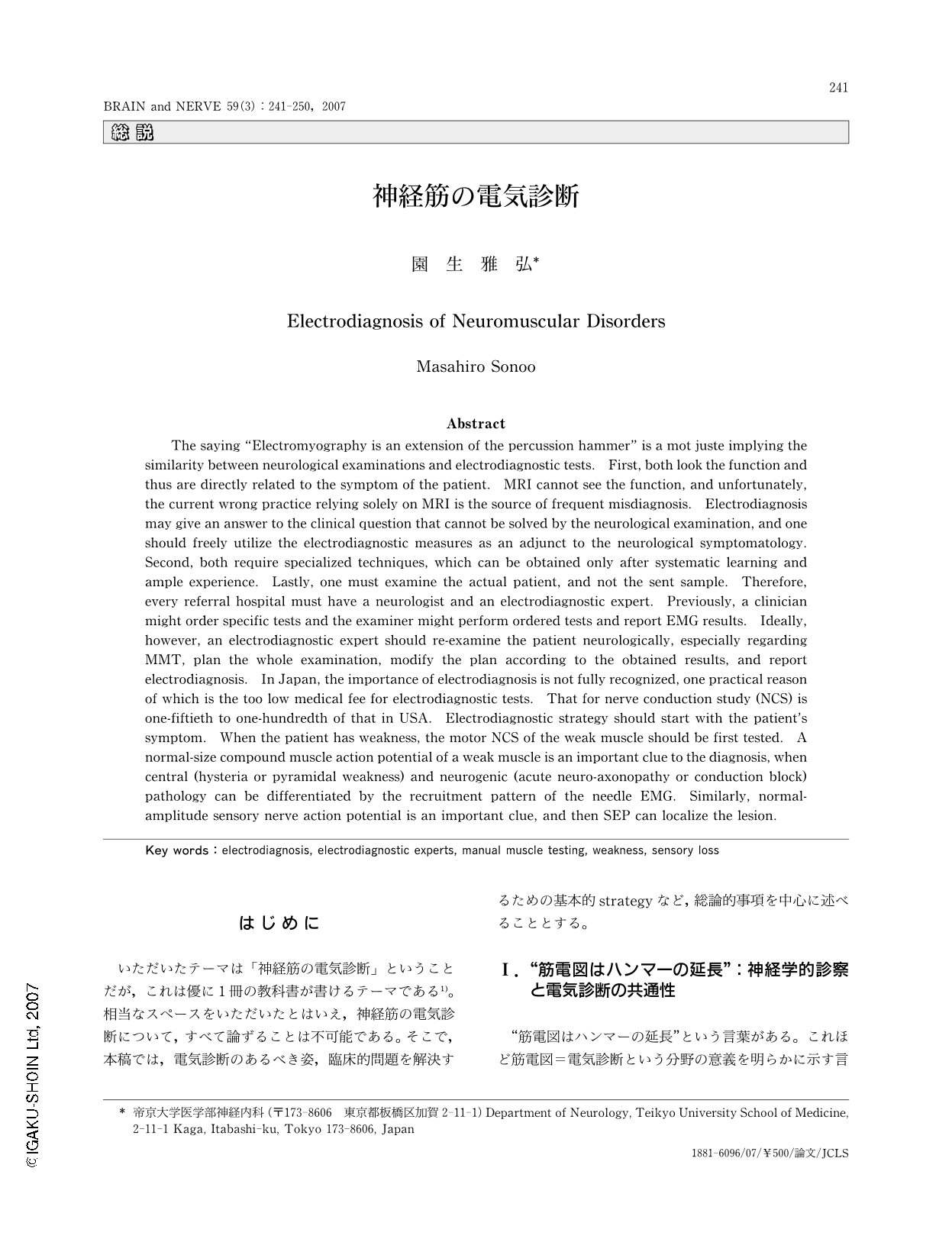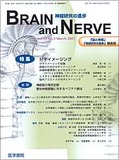Japanese
English
- 有料閲覧
- Abstract 文献概要
- 1ページ目 Look Inside
- 参考文献 Reference
はじめに
いただいたテーマは「神経筋の電気診断」ということだが,これは優に1冊の教科書が書けるテーマである1)。相当なスペースをいただいたとはいえ,神経筋の電気診断について,すべて論ずることは不可能である。そこで,本稿では,電気診断のあるべき姿,臨床的問題を解決するための基本的strategyなど,総論的事項を中心に述べることとする。
Abstract
The saying “Electromyography is an extension of the percussion hammer”is a mot juste implying the similarity between neurological examinations and electrodiagnostic tests. First,both look the function and thus are directly related to the symptom of the patient. MRI cannot see the function, and unfortunately, the current wrong practice relying solely on MRI is the source of frequent misdiagnosis. Electrodiagnosis may give an answer to the clinical question that cannot be solved by the neurological examination,and one should freely utilize the electrodiagnostic measures as an adjunct to the neurological symptomatology. Second, both require specialized techniques, which can be obtained only after systematic learning and ample experience. Lastly, one must examine the actual patient, and not the sent sample. Therefore, every referral hospital must have a neurologist and an electrodiagnostic expert. Previously, a clinician might order specific tests and the examiner might perform ordered tests and report EMG results. Ideally, however, an electrodiagnostic expert should re-examine the patient neurologically, especially regarding MMT, plan the whole examination, modify the plan according to the obtained results, and report electrodiagnosis. In Japan, the importance of electrodiagnosis is not fully recognized,one practical reason of which is the too low medical fee for electrodiagnostic tests. That for nerve conduction study (NCS) is one-fiftieth to one-hundredth of that in USA. Electrodiagnostic strategy should start with the patient's symptom. When the patient has weakness, the motor NCS of the weak muscle should be first tested. A normal-size compound muscle action potential of a weak muscle is an important clue to the diagnosis,when central (hysteria or pyramidal weakness) and neurogenic (acute neuro-axonopathy or conduction block) pathology can be differentiated by the recruitment pattern of the needle EMG. Similarly, normalamplitude sensory nerve action potential is an important clue, and then SEP can localize the lesion.

Copyright © 2007, Igaku-Shoin Ltd. All rights reserved.


